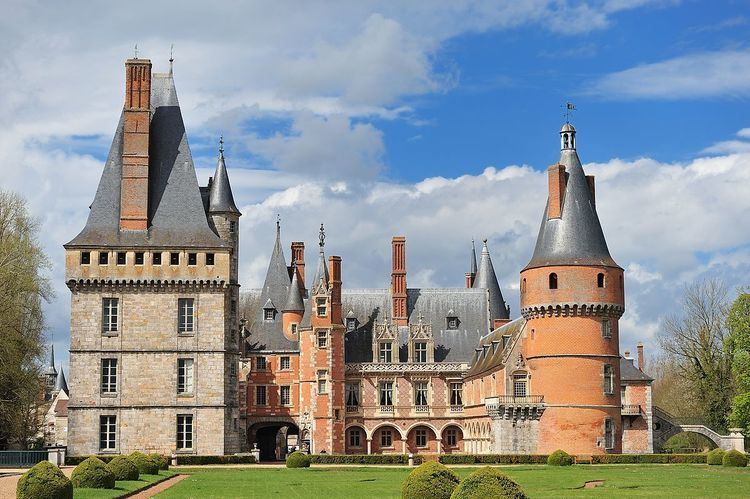Phone +33 2 37 23 00 09 | ||
 | ||
Hours Open today · 2–6PMFriday2–6PMSaturday10:30AM–6PMSunday10:30AM–6PMMondayClosedTuesday2–6PMWednesday2–6PMThursday2–6PM Similar Aquaduc de Maintenon, Château d'Anet, Palace of Fontainebleau, Château de Châteaudun, Chapelle royale de Dreux | ||
Secrets d histoire ch teau de maintenon
The Château de Maintenon is a château, developed from the original castle, situated in the commune of Maintenon in the Eure-et-Loir département of France. It is best known as being the private residence of the second spouse of Louis XIV, Madame de Maintenon.
Contents
- Secrets d histoire ch teau de maintenon
- Le fabuleux no l du ch teau de maintenon 2015
- Construction
- Interior
- Gardens and aqueduct
- Succession of owners and inhabitants
- References
The castle has been classified as a Monument historique since 1944 by the French Ministry of Culture.
Le fabuleux no l du ch teau de maintenon 2015
Construction
The construction of the castle began in the 12th and ended in roughly the 18th century. In the early 16th century it was purchased by Louis XII's treasurer Jean Cottereau, who transformed the castle into a country house. In the 17th century it was rebuilt for Madame de Maintenon, who purchased the estate in 1675.
The château's main features are the keep, constructed in the 13th century, and the principal corps de logis, flanked by two round towers, one at the avant-cour and the other at the bridge across the moat. The east and west wings frame a cour d'honneur, beyond which is the moat filled by the waters of the Eure, and, beyond, the parterre and park. The picturesque massing of the varied towers and roofs pleased François-René de Chateaubriand who found its special character was like that of an abbey or an old town, "with its spires and steeples, grouped at hap-hazard".
At the far end of the gardens is the aqueduct called the Canal de l'Eure, also known as the canal de Louis XIV, ordered by Louis XIV. Its colossal scale impressed Chateaubriand, who said that it was "a work worthy of the Caesars". It was constructed by the Marquis de Vauban between 1685 and 1690 in order to transport water from the Eure River to the gardens and fountains at the Château de Versailles.
In the 18th century there was an orangerie constructed as well as stables.
Interior
The interior has been restored, and furniture and decoration can be seen.
The other tower is not open to visitors.
Gardens and aqueduct
The main parterre was designed by the famous landscape architect André Le Nôtre who also worked at Versailles, Saint-Germain-en-Laye and Marly. The parterre has two interlacing "L"'s, in honour of Louis XIV. Two allées, given modern names in honour of Le Nôtre and Racine, border the Eure river.
At the far end, cutting through the gardens, is the aqueduct built from 1685 to supply the fountains of the park of the Palace of Versailles. The project meant that water was diverted from the Eure river some 80 kilometres (50 mi) away. The arches of the structure reach a height of 60 feet. Vauban was in charge of the works.
The aqueduct had to have 47 arcades to the first row, 195 arcades to the second and 390 to the third one. The wars of Louis XIV prevented the work's completion.
It is also classified as a Monument historique since 1875 by the French Ministry of Culture.
Succession of owners and inhabitants
Famille de Maintenon
Cottereau Family
Angennes Family
Famille d'Aubigné
House of Noailles
Fondation du château de Maintenon
